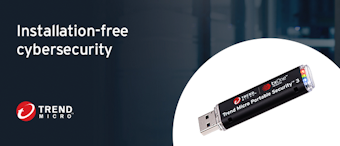
If there’s one thing that the Industrial Internet of Things (IIoT) requires—or any industry digitalization effort, for that matter—it is the need for multi-vendor, multi-platform interoperability. No data is shared and analyzed and no systems are connected without it. That’s why organizations like FDT Group and the OPC Foundation, though they may not be household names to most industrial end-users, are at the center of the IIoT, Industry 4.0 and other industrial digitalization efforts.
The FDT Group’s FDT standard establishes an open, modular and holistic automation architecture that adapts to the changing requirements of suppliers and end-users, according to Glenn Schulz, FDT Group’s managing director. Meanwhile, the OPC Foundation’s OPC UA standard provides complete information modeling to connect previously disconnected devices and applications. As Tom Burke, OPC Foundation president, explained it: “OPC UA enables client applications to connect to server applications without understanding the syntax and semantics of the data compiled into the client application. This approach is all about simple discovery of the capabilities of the server, and efficiently leveraging its services and data.”
Since both standards are open, non-proprietary and independent, any automation supplier can use them—and most have been for years.
Explaining how the FDT/OPC collaboration helps ease device interoperability for automation suppliers and, ultimately, end-users, Schulz said that automation suppliers using FDT Device Type Manager (FDT/DTM) technology get the OPC UA interoperability for free—“without any additional work or changes to the DTMs that support their devices.” DTMs are device drivers that allow for connection and configuration of industrial intelligent devices.
“富人FDT规范的体系结构lowed the added OPC UA integration to leverage existing FDT interfaces with no changes required to the core FDT specification,” Schulz explained. “For end users, this means that their entire catalog of FDT 2.0 DTMs will proffer real-time information to any OPC UA enabled application within the secured enterprise. No additional configuration, downloads, or updates are required.”
The most recent collaboration update from the FDT and OPC organizations came in November 2016 when they announced the released an FDT for OPC UA companion specification for information modeling. “This specification is critical to the standard integration of information provided by FDT technology into the OPC UA information model,” said Burke, “as it provides a key capability for device diagnostics, configuration and remote asset management, as well as for integration with manufacturing execution systems.”
舒尔茨补充说,该规范是“用于自动化系统制造商的实施嵌入在工程系统中的FDT/框架应用程序, distributed control systems (DCSs), asset management systems and other applications. The FDT for OPC UA companion specification enables true interoperability between applications and devices for configuration, diagnostics and runtime operation. It allows devices and host applications to easily integrate support with IT applications, including information put into the Microsoft Azure cloud. End-users can implement complete log tracking and tracing of information for all aspects of information management, ranging from configuration to runtime operation.”
我问舒尔茨,当他指出该伴侣规范可以实现“应用程序和设备之间的真实互操作性进行配置,诊断和运行时操作之间”时,他的意思是什么。
舒尔茨回答说:“术语互操作性通常用来表示基本的连通性或有限的共同接口。”“在这种情况下,两个最普遍的工业自动化行业标准组织已经聚集在一起,以确保全面的整合,以解决涉及企业应用程序传感器到云的广泛行业应用程序。”
该新规范的一个关键方面是它为最终用户提供的互操作性的透明度。伯克说:“从架构的角度来看,FDT/框架可以访问设施中的所有控制网络以及网络附加的所有支持设备。”“它还了解完整的控制系统拓扑。结果,FDT/帧中的OPC UA服务器允许任何客户端应用程序浏览控制体系结构的拓扑,在拓扑中选择任何网络上的单个设备,并获得有关该设备的关键操作数据,例如其健康,其当前输出值,其标签信息或其他信息。FDT/FRAME透明地并自动处理到OPC UA客户端的所有必要网络中流量的路由,以使设备直接连接。”
As an example of how this works, Schulz said that an Android tablet application can be used to act like an OPC UA client to “allow a maintenance technician to ascertain the operational status and health of an asset by interrogating the remote FDT/Frame as he or she roams the facility. To the operator, it will appear as if the wireless tablet is connected directly to the asset in question.”
To further advance FDT Group and OPC Foundation support for IIoT and Industry 4.0, the FDT Group is developing an FDT IIoT Server, referred to asFITS. “It will enable mobility, cloud and fog enterprise applications, as well as sensor-to-cloud and enterprise-wide connectivity,” Schulz said. “It will simplify the move to IIoT by combining OPC UA integration, web services and rich control network interoperability to optimize connectivity and information exchange for the next generation of automation. It will also feature robust layered security addressing all components of the server architecture.”
他补充说,FITS将适用于Greenfield和Brownfield应用程序。
由于IIT设备连接空间中的所有活动都与拟合的开发一致,因此我要求Schulz解释FDT/OPC协作和拟合是否如何解决MQTT和Restful API等通信技术的增长。
Schulz说:“ FITS通过启用任何基于浏览器的客户端访问DTM和服务器功能,从而增加了这些现有功能。”“借助REST和WSS,可以编写应用程序,该应用程序可以在企业或远程位置的任何地方安全访问。拟合还允许完全基于云的解决方案,因此,将支持MQTT,VPN和其他安全远程访问方式。好消息是,当今可用的所有OPC UA集成都将完全使用Fitts Architecture。”
































